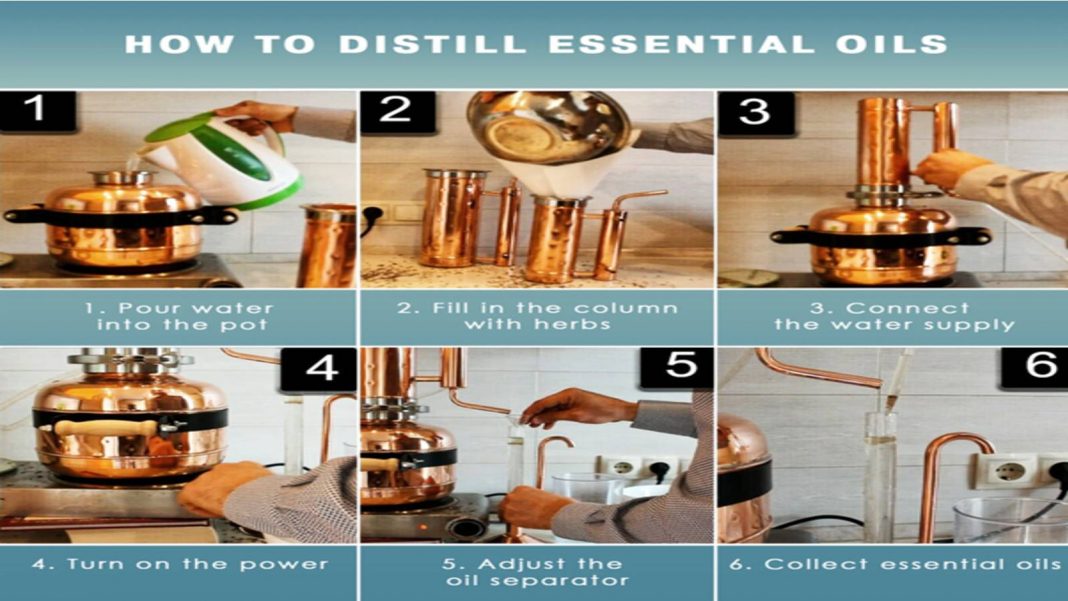Essential oils are extracted from plants in three main ways: pressing, distillation and solvent extraction. There is another way to obtain essential oils – this is enfleurage, but it has more historical significance and is used extremely rarely.
Distillation (steam distillation) is the most common method for obtaining essential oils, based on the property of essential oils to volatilize with hot steam. For this, special distillers are used, you can pick them up from the Copper Pro brand, there is a large selection of quality products.
There are 3 types of distillation:
Water distillation (hydrodistillation): Vegetable raw materials are in boiling water.
Water-steam distillation: The raw material is in boiling water and is additionally processed with steam.
Steam distillation: Vegetable raw materials are isolated (lie on a grate or in a separate container), and steam passes through it.
The steam used in distillation can be under pressure, although all these processes can also take place at atmospheric pressure. It all depends on the specific technique and type of raw material.
In all three cases, the gaseous mixture of steam and oil is condensed in the refrigerator, forming a liquid mixture of water and essential oil, which is easily separated into its components using separating tubes, the so-called florentines.
Steam distillation is the most common distillation method, so let’s take a closer look at it.
Steam is passed through plant materials (leaves, flowers, roots, etc.), takes essential oil with it (it was released from the essential glands of plants under the influence of temperature), and condenses in the refrigerator (cooling occurs due to running cold water) – the output is a two-phase liquid to be separated. So, the output is two products: the main one is an essential oil, and the side product is aromatic water (hydrolase).
Aromatic waters are used in aromatherapy, cosmetology, perfumery and cooking – this is a valuable fragrant product with therapeutic properties inherent in the plant, of course, to a lesser extent than the essential oil itself.
Safe use of essential oils
The use of natural essential oils brings a lot of pleasant emotions, but it requires a responsible attitude and compliance with all safety measures. Remember to dilute the essential oils in the base (base); test for an allergic reaction before use; caution with phototoxic oils. And, of course, choose reliable brands that sell high-quality natural essential oils.







